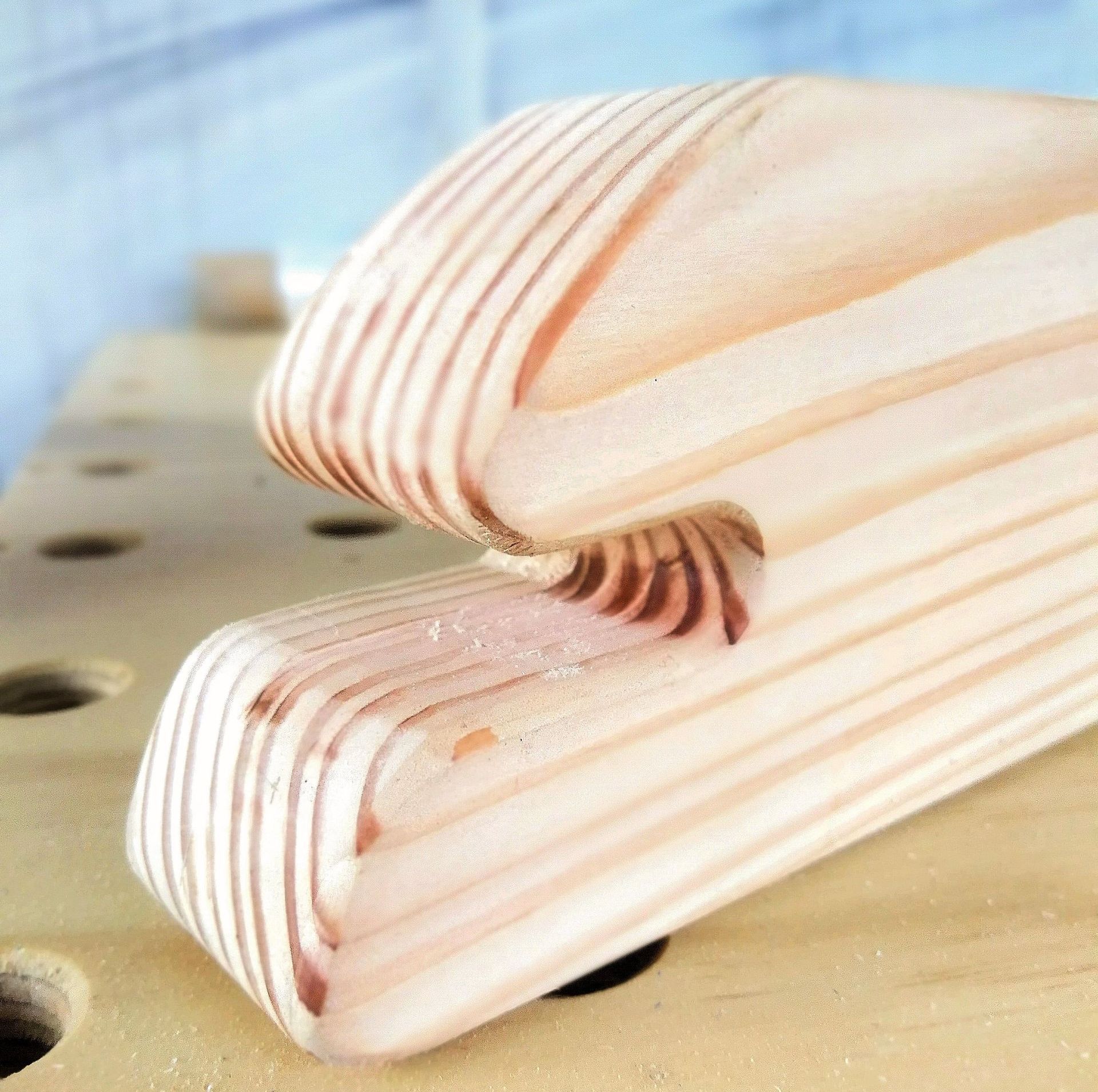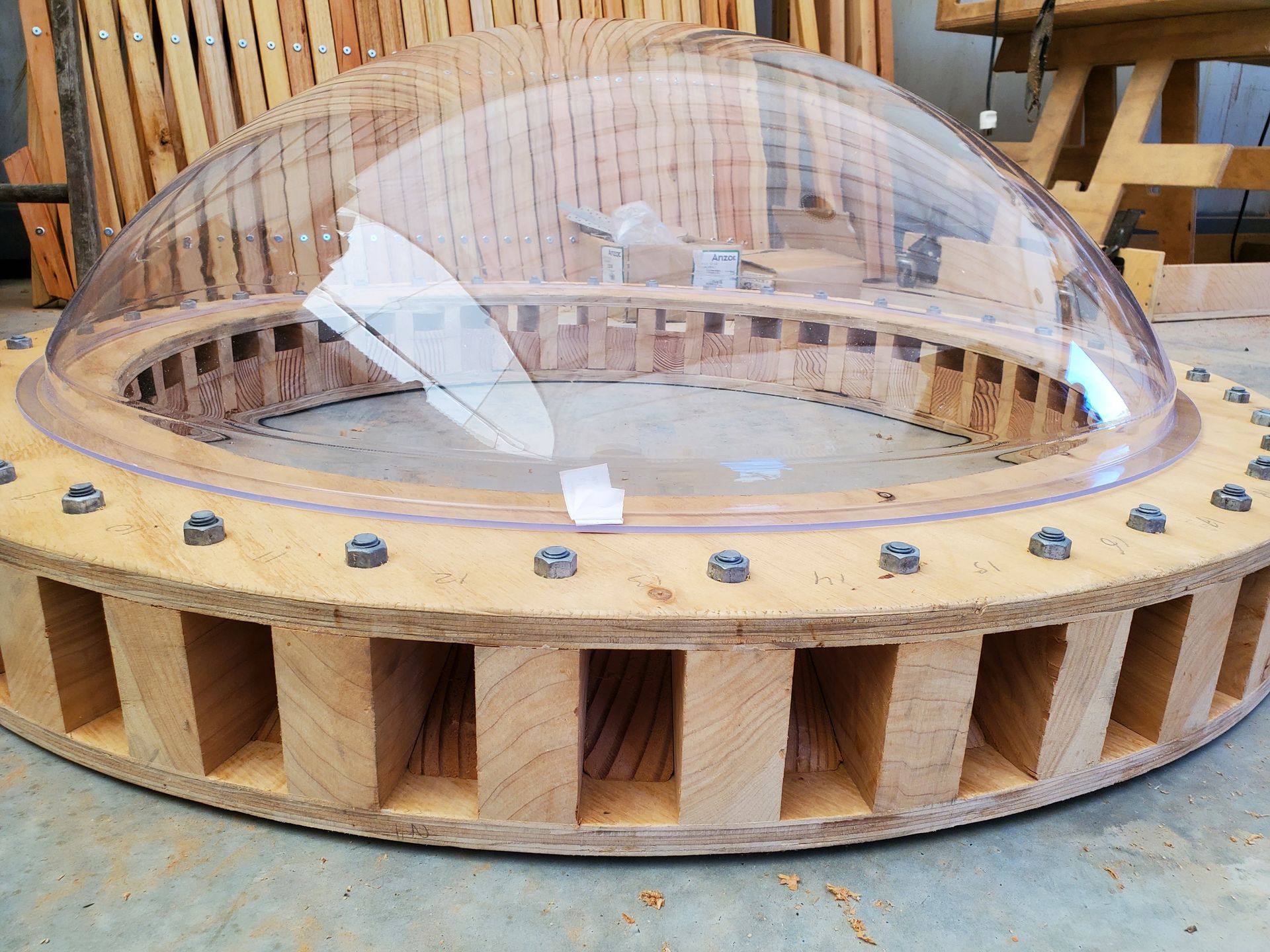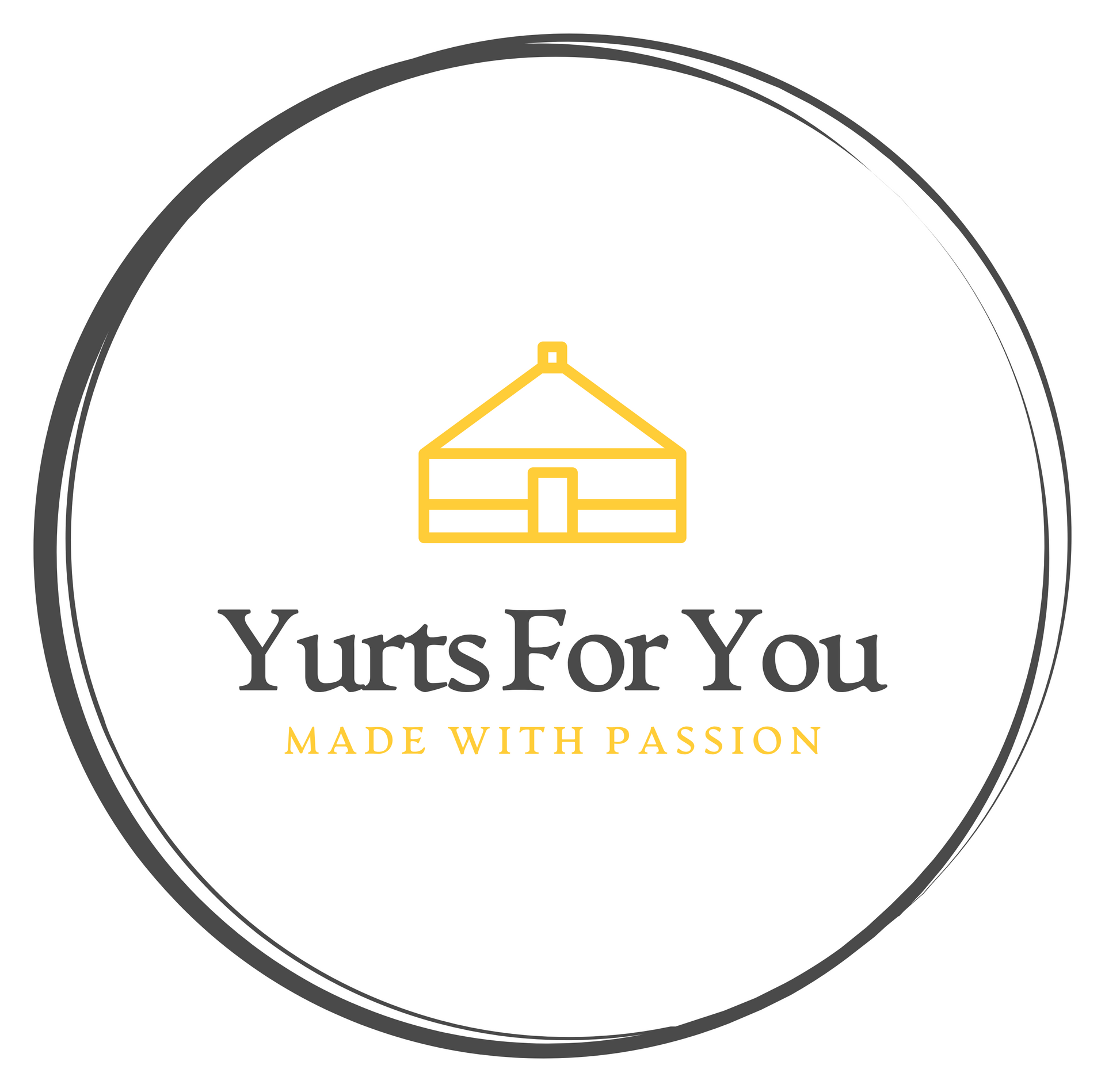Materials we use
At Yurts for You, we are passionate about creating beautiful and comfortable spaces for you to enjoy nature. Our yurts are made with high-quality, durable, sustainable and aesthetically pleasing materials
Lattice Wall
Our lattice wall is made of clear, expandable, flexible, eucalyptus wood.We use eucalyptus wood as it is known for its strength, durability, and resistance to pests. The wood is treated with a penetrating oil that protects it from moisture and mould. The lattice is assembled with brass fasteners that are corrosion-resistant and strong.
The finished height of the wall is about 2 meters. A stainless steel wire is woven between the top of the lattice and secured with cable grips, providing stability and support for the roof.
Rafters
Our rafters are made of structural grade Douglas fir wood that is sanded and oiled for a smooth and natural finish. The rafters are arranged radially from the center ring, creating a spacious and elegant interior. A wire tensioned with a turn-buckle encircles the rafters at mid-span, adding strength and rigidity to the roof.

Center Ring
Our center ring is the heart of the yurt, where the rafters meet and form a stunning pattern. The ring is made of a combination of structural grade plywood and Douglas fir wood, with a thin high-grade plywood finish. The ring is glued with marine-grade adhesive and certified by an engineer for safety and durability. The ring also has a hole for the dome, allowing natural light and ventilation to enter the yurt.

Door & Frame
Our yurts can accommodate one or two doors, depending on your site and style. We partner with Renall doors to provide you with high-quality timber doors that suit your yurt. We also suggest adding a porch or an awning to your yurt to shield your door from the weather. Alternatively, you can provide your own doors and we will make custom door jambs that fit the lattice wall. We prefer timber doors and frames that match the size and shape of the yurt and are no wider than 1.60m.
Windows
Our yurts have windows made of clear vinyl that is durable and marine-grade. You can decide how many windows you want and where to put them, based on your site and preference. The vinyl is the same as the one used for car and boat covers, and it lasts for 5-8 years in outdoor conditions. To protect the windows from UV rays, we offer canvas shutters that can be rolled down and secured with zips or ties. The shutters can also have insulation for extra warmth. Windows can also have flyscreens to keep out insects.

PVC Roof
Our yurts have PVC roof covers made of Diamond 700 fabric, which is a high-quality fabric produced by Sattler industries in Austria for Contender fabrics. The fabric has a smooth and even vinyl coating with an acrylic top coat, making it superior to most PVC fabrics. The fabric can last for more than 10 years outdoors, if it is kept clean from dirt and dust. To prolong its life, it can be recoated with products like Dulux Hypersheild. Our yurt roof covers are welded rather than sewn for most of the parts, ensuring a waterproof membrane. The roof covers and the wall panels can be replaced easily if needed.
Walls
Our yurts have canvas wall claddings made of Wax Converters Textile DX12, which is the best fabric we have found for NZ weather. The fabric is coloured and waterproofed, and it has protection from mold, mildew and UV rays. If you apply the WCT proofing agent every two years, the fabric will last for more than 8 years outdoors.
Insulation
Our yurts are insulated with terra lanna natural wool insulation, which is made in NZ from a wool/polyester blend that is thermally bonded. This insulation is breathable and can absorb and release moisture, preventing dampness. It is also safe, natural, odourless and compostable.
Vapour Barrier
We use Thermakraft Watergate Plus as a vapour barrier for our yurts. This is a common building wrap that reflects warm moist air back into the room. It prevents condensation from cold air outside, because it is covered by the insulation.
Lining
The inner lining covers the structure - the roof is one sheet that goes over the rafters. The walls have the insulation sewn in with the lining, which gives a nice finish and makes it easy to install. The lining is attached to the cable at the top.

